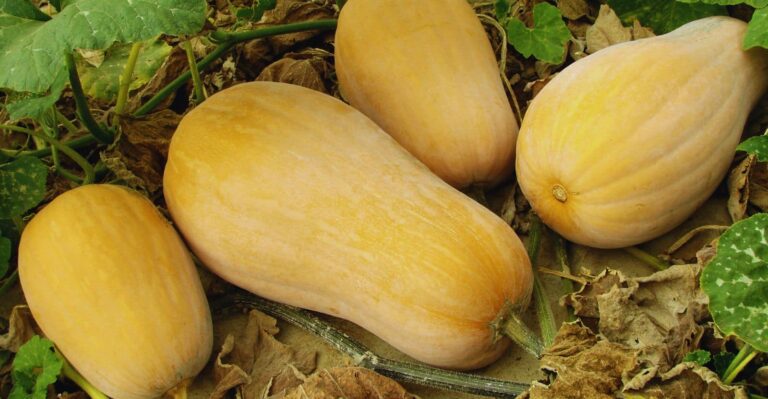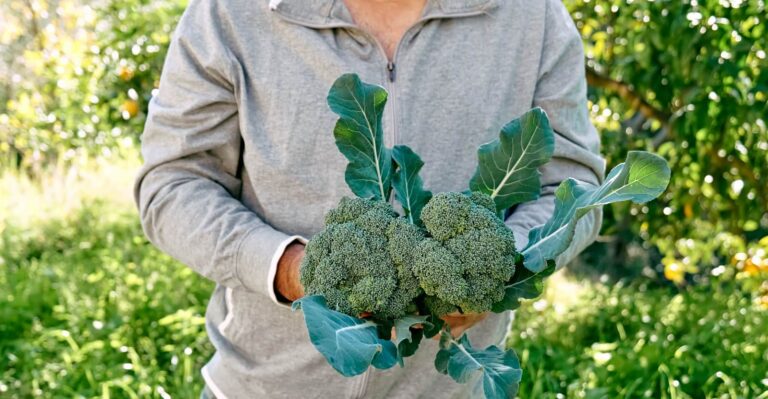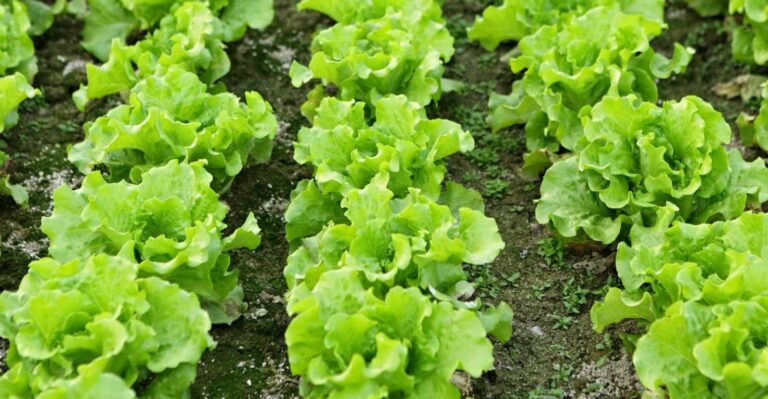Amazon has put together some great Home Gift Deals – save money and get your shopping done at the comfort of your home! Click here to see deals on Amazon
There are many types of melons in the world. One can find these at a grocery store or farmers’ market, which is usually cheaper than at the supermarket. You might find there cantaloupe, honeydew, Korean melon, casaba melon, and Persian melon to be the most readily available varieties.
They’re delicious, and they come in a different variety. Some melons are grown for their appearance, while others are grown for their taste. Some varieties of melons contain antioxidants that help prevent cancer and slow the aging process.
For example, watermelon contains lycopene, carotenes, and a high vitamin C content, protecting the brain and the cardiovascular system. Check out some popular melon varieties.
29 Different Types of Melons
1. Ananas Melon—Cucumis melo
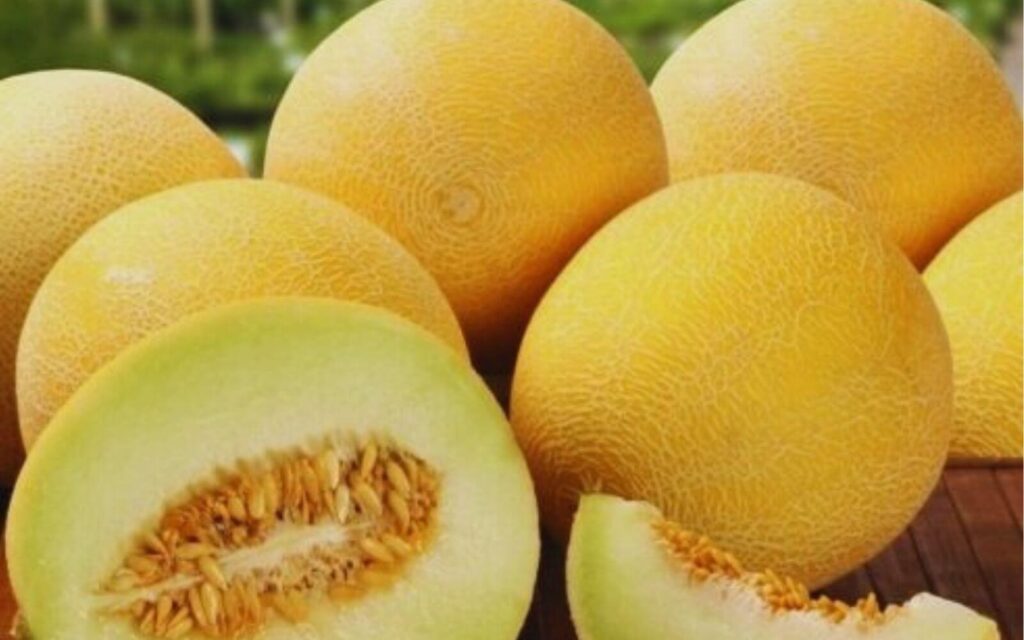
| Size | 12–17 cm diameter |
| Availability | Summer through fall |
| Color | Green to golden yellow |
| Nutrient | vitamin A and C |
The sweet and spicy taste of this melon makes it an ideal choice for gardeners. It has an oblong shape with yellowish-orange skin. For the usual observer, it also looks like a cantaloupe. You can eat the fruit at any stage of ripeness, but it’s recommended to eat it when the outer green flesh layer has turned yellow.
The ananas melon is very famous, especially in the hot and humid regions of India. It’s rich in vitamin A and C and contains healthy minerals such as manganese, fiber, iron, and zinc. Also, it’s helpful to aid in digestion issues, boost the immune system and help with bronchitis symptoms.
You can grow it in a greenhouse or a seedbed. The seeds should be planted about 2 cm deep when the soil temperature is 70°F – 85°F (21°C – 29°C). The germination of seeds will take about 4–10 days that should be carefully watered when they’re young. After that, you should fertilize them once every three weeks.
2. Armenian Cucumber—Cucumis melo var. Flexuosus
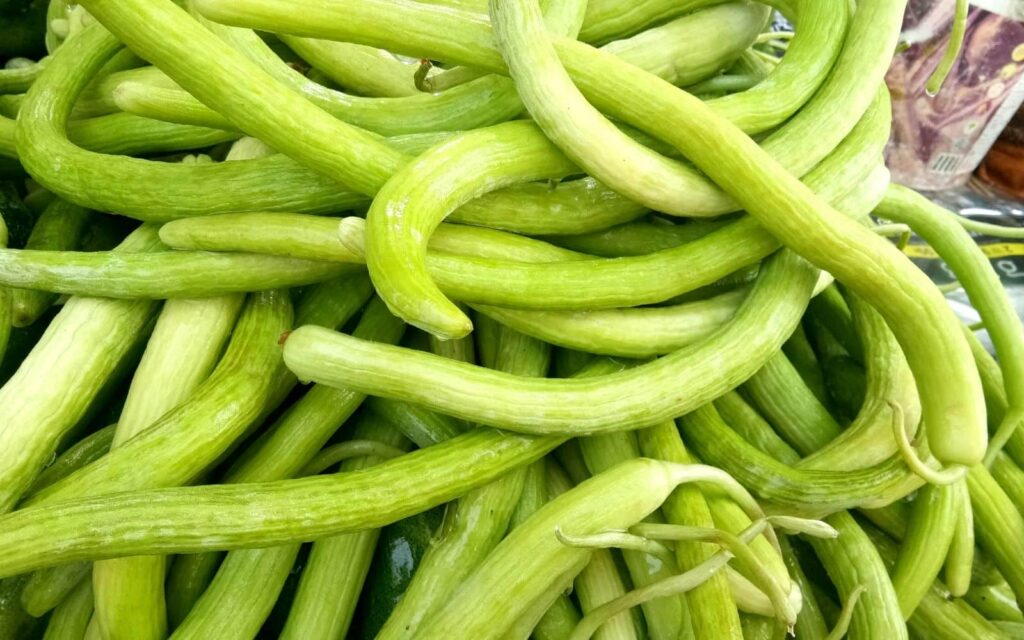
| Size | 15 inches long |
| Availability | Summer |
| Color | Green and white |
| Soil | Acid (pH <6) |
Armenia cucumber grows on an annual vine with long, slender cucumber-type fruit. The vine produces yellow flowers, which will bloom for much of the year. It can be grown in rich, loose, slightly acid soil in full sun.
It does well on a trellis because of the long length of the fruit. It blooms yellow flowers in frost-free areas. You don’t need to peel it, and you can eat it like cucumber.
They taste best when it’s still small at around 1 foot long. But if not harvested early, the fruit can reach up to 36 inches long. A mature cucumber becomes hard and bitter, which makes it not very tasty to eat. It’s primarily grown in Armenia, Egypt, and Asia as popular varieties of melon.
3. Bailan Melon
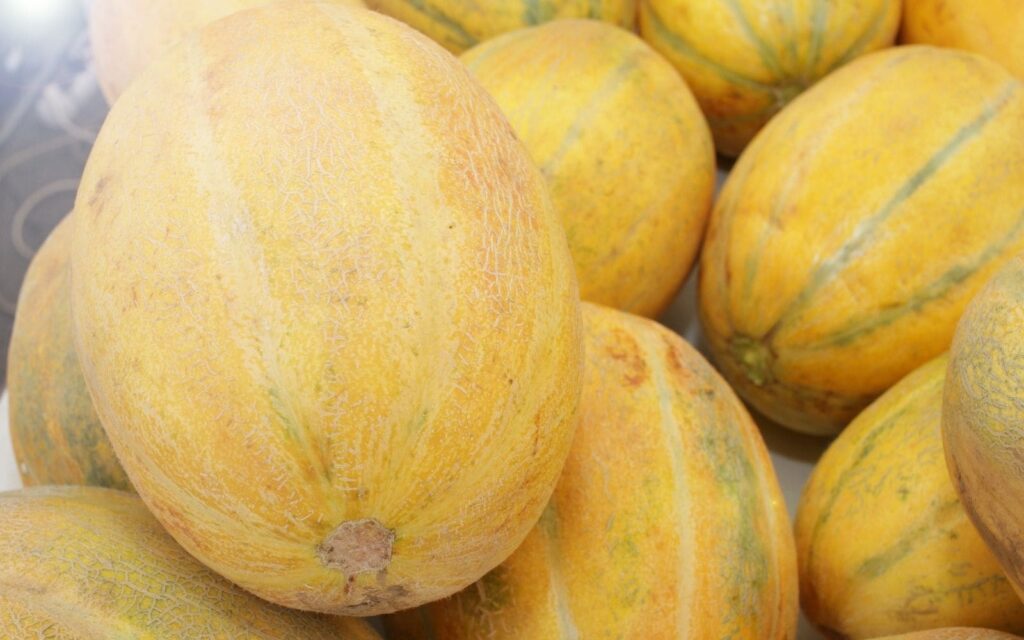
| Size | 3 to 4 inches (miniature version) |
| Availability | Summer |
| Color | Light green |
| USDA Zone | 4 to 11 |
The Bailan Melon originated in Guangdong, China, and has been traditionally served as part of the dim sum cuisine. It’s believed that the name “Bailan” comes from two words in Cantonese: “Pai lan,” which means water caltrops, and “Lan,” which means lotus.
The name refers to how its white flesh resembles water caltrops while its rind resembles lotus leaves. These are easy to grow from seed, and you can get a head start by sowing seeds indoors.
Although these are hardy, you should make sure that the temperature is mild enough when transplanting outdoor. The best time to plant is after the frost has over. The germination happens in 16 days.
Some experts consider this to be a member of the honeydew family due to its very close resemblance to it. Bailan melon has good medicinal properties as it plays a vital role against chronic diseases. Also, it’s a rich source of polyphenols, carotenoids, and fatty acids.
4. Bitter Melon—Momordica charantia
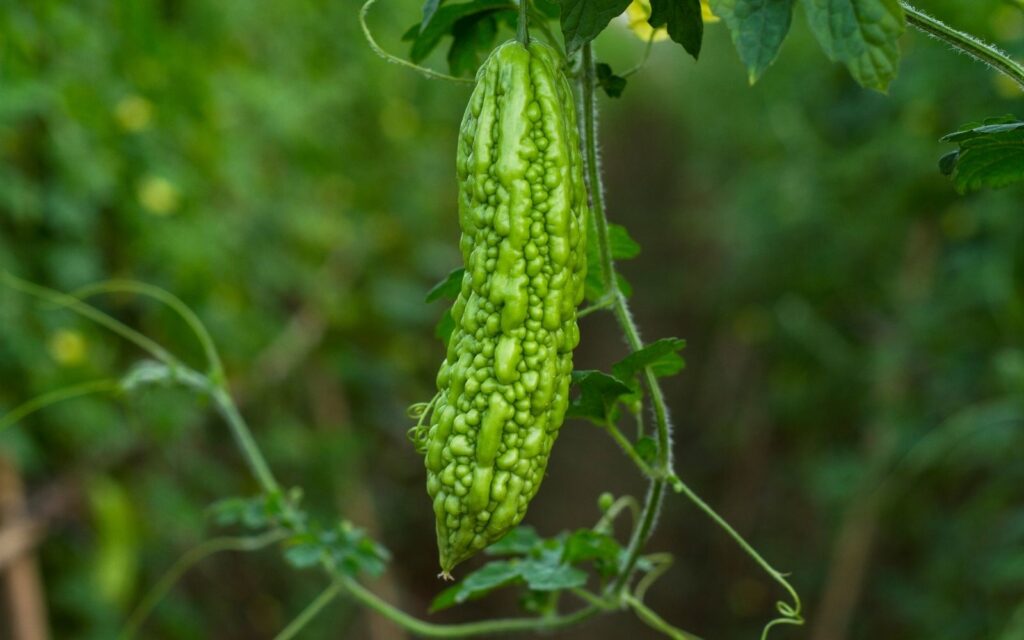
| Size | 10 inches |
| Type | Vining plant (13–16 feet long) |
| Yield | 10 to 12 fruit |
| Sunlight | Full (75°F – 80°F (24°C–31°C)) |
Bitter melon is a fruit that is usually eaten raw and has various health benefits. For example, it has anti-inflammatory, anti-diabetic, and anti-cancer properties.
Bitter melon is made up of a few parts: the flesh, which is the edible part with a bitter taste, seeds that are usually dry and discarded after cooking, and rind, usually discarded or used in medicines.
The flesh ranges from dark green to light green, depending on the maturity of the plant. Bitter melon produces beautiful flowers, and once those flowers develop, they make a fruit packed with nutrition.
These fruits are also very high in vitamin C. In addition, they’re a good source of vitamin A, potassium, and beta-carotene.
5. Canary Melon—Cucumis melo
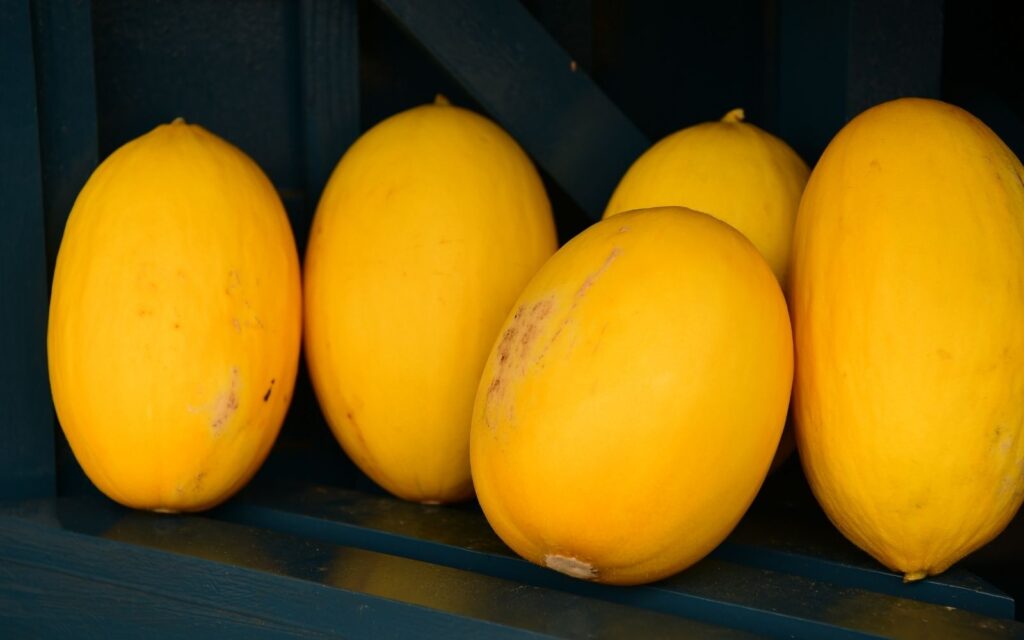
| Size | 2 feet tall |
| Soil | Lightly moisture sandy soil |
| Sunlight | Full Sun |
| USDA Zone | 9–12 |
Canary melon belongs to the same group of families as Honeydews, Casabas, and Crenshaw melon. It has a bright yellow outer skin that closely resembles a honeydew melon. It produces fruit that is green when growing up but turns into light yellowish as it ripens. It tastes very sweet and has eye-catching color.
This is widely grown in South America and Asia as it grows best in a humid tropical climate. It has a long shelf life which makes it easy to transport long distances. You can store it at a mild temperature of 59°F (15°C).
You can grow it in the outdoor garden, where it can grow 10 feet long and 2 feet high. It needs full sunlight while growing, and the growing season lasts for 80–90 days.
The best time to sow seed is when the danger of frost has passed, and the soil is warm. You can start seeding six weeks before the last frost. You can transplant it when the seedlings have their first two sets of true leaves.
6. Cantaloupe—C. melo cantalupensis
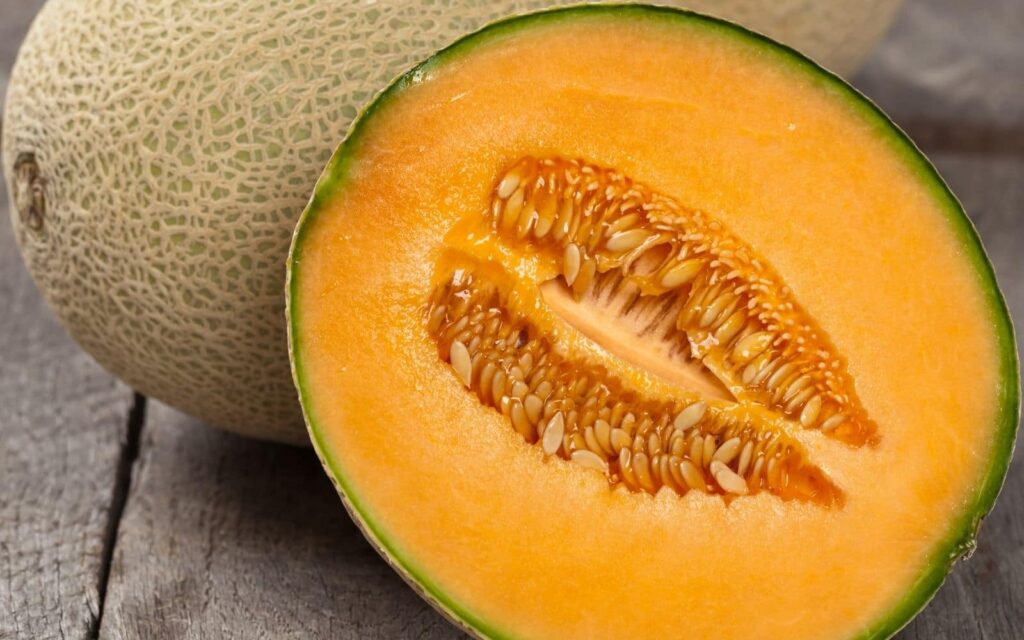
| Size | 2 feet tall and 3 feet long |
| Soil | Lightly moisture sandy soil |
| Sunlight | Full Sun |
| USDA Zone | 9–11 |
Growing Cantaloupe can be a fun and rewarding experience as it’s full of nutrients with large water content. This delicious fruit thrives in any climate, growing better in hot weather and sun.
Growing cantaloupes is easy, but there are some essential things to know to grow healthy fruit. Cantaloupes require six hours of sunlight per day for optimum growth.
They also require a lot of water, at least one inch per week. However, the water shouldn’t be allowed to stand on the plant. It may cause root rot that makes the fruit fall off prematurely.
The European Cantaloupe and the North American Cantaloupe are the two types that are commonly known as “Cantaloupe.” The European Cantaloupe is named after its birthplace in Italy. The North American Cantaloupe is grown in warm regions across Mexico, Canada, and the US.
You can grow Cantaloupe through seeds when the temperature has become over 50°F to 60°F (10°C–15°C). Sow cantaloupe seeds in well-drained soil in a group of 2 to 3 seeds.
Then, water it about 1 to 2 inches deep per week. Reduce the watering frequency as it grows; otherwise, it damages the rinds. It takes up to 85 days for the plant to become mature.
7. Casaba Melon

| Size | 4 feet long |
| Soil | Well-drained Sandy soil |
| Sunlight | Full Sun |
| USDA Zone | 9–11 |
The Casaba Melon is a watermelon cultivar with a sweet flavor that is uncommon in other watermelon varieties. These are one of the few fruits that you should plant in the spring.
This way, they can develop their roots before the summer heat sets in. Casaba plants need about 8 hours of full sunlight per day and need to be watered daily for the first month or two after planting.
For best results, plant your seeds 5–6 weeks before your last frost date and keep them well-watered during this time. It takes a long hot summer with at least 112 days of consistently warm weather to grow well. It’s best cultivated in a warm climate.
8. Charentais Melon
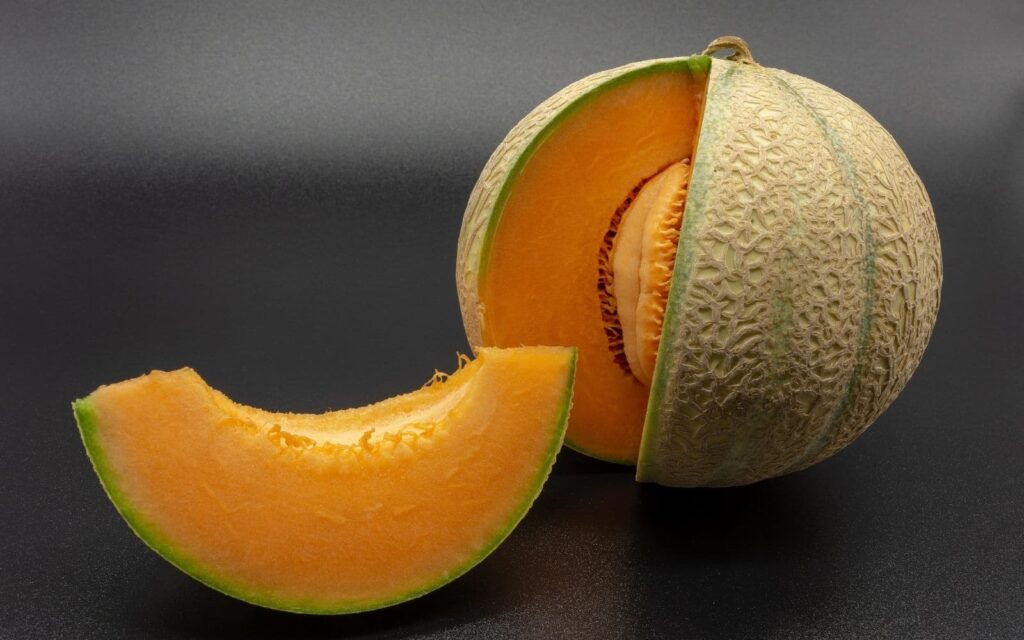
| Size | 2 lb sweet flavor |
| Soil | Well-drained Sandy soil |
| Sunlight | Full Sun |
| Mature | 75–90 days |
Charentais melon is a European heirloom variety of melon that is often found in catalogs and nurseries. It’s an indeterminate type of melon and produces a large, sweet fruit that is typically eaten like a melon.
The name comes from the town of Charente, which is in southwestern France. These are great to use in salads, as a dessert fruit, or just to eat fresh. Like most melons, Charentais plums are rich in vitamin C.
This heirloom melon is on the smaller side, not as big as a peach but bigger than a cherry. The color is a deep dark red with a glossy coat. It’s an extremely sweet melon with an excellent flavor. The melon is also very popular in Europe, where it’s grown commercially for consumption.
9. Crenshaw Melon—Cucumis melo
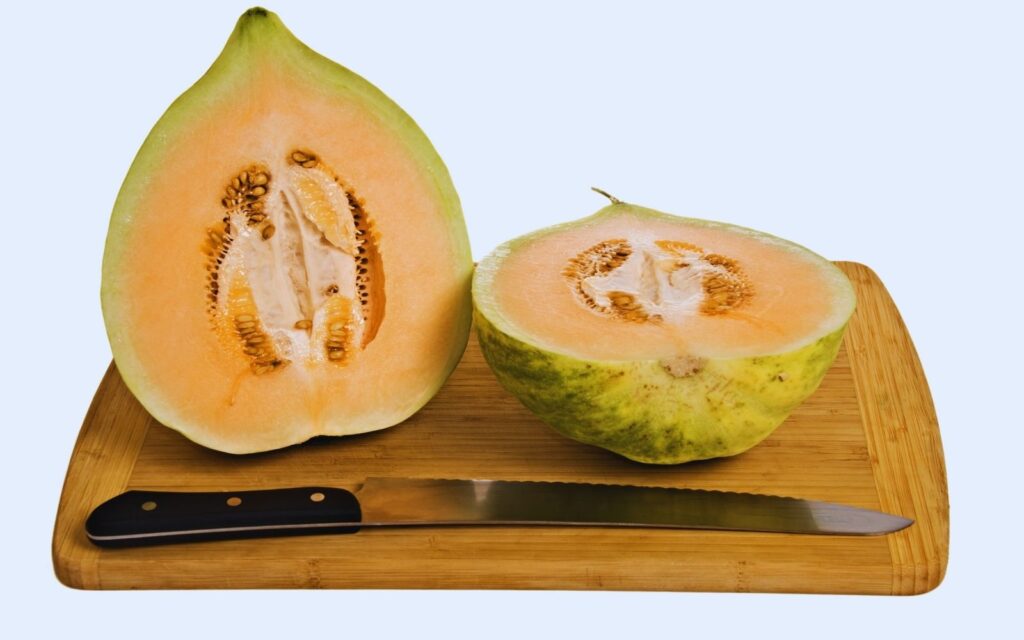
| Size | 18 feet long vine |
| Soil | Well-drained sandy soil |
| Sunlight | Full Sun |
| USDA Zone | 8–11 |
The Crenshaw Melon is a type of cantaloupe. You can get seeds from your local nursery or buy them online. There are three types of cantaloupes: musk, netted, and the classic cantaloupe melon shape.
You can grow by planting seeds 8 to 12 inches apart in rows spaced 10–12 feet apart, with three plants per hill and six hills per row. It grows well in well-drained soil. The soil should be fertile and loamy and use organic fertilizers to ensure the best yield.
The rind is green-yellow with ridges running along its length. The pink-peach color fruit contains a sack of seeds in the middle. When fully grown, it can weigh about 10 pounds with a thick oval-shaped rind with green-yellow ridges.
Like other melons, these are highly beneficial for health. They have low calories but contain high fiber and vitamin A.
10. Cucamelon—Melothria scabra
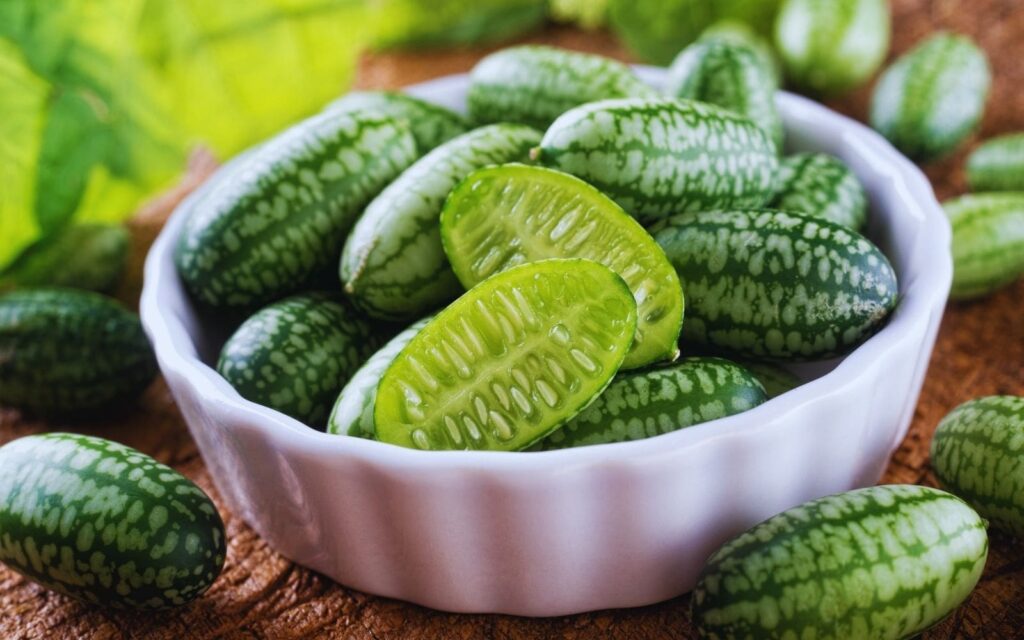
| Size | 4 to 6 inches wide |
| Soil | July to September |
| Temp | 65°F–75 °F (18°C—24°C) |
| USDA Zone | 8–11 |
Cucamelons are tropical plant that is native to Florida and the Caribbean. They’re a heavy feeder (so they require lots of nitrogen-rich fertilizer), and your greenhouse needs to be well ventilated.
To grow Cucamelons, place the seed in moist soil and wait until it has germinated and developed into a small plant with three leaves. Once the plant has grown to this point, place it in direct sunlight for about 12 hours daily. It should start bearing fruit within 12 weeks of planting the seeds.
The Cucamelon vines produce a regular supply of fruit in summer. These plants are resistant to pests and drought and grow outdoor in a partial shade site.
11. Gac Melon—Momordica cochinchinensis
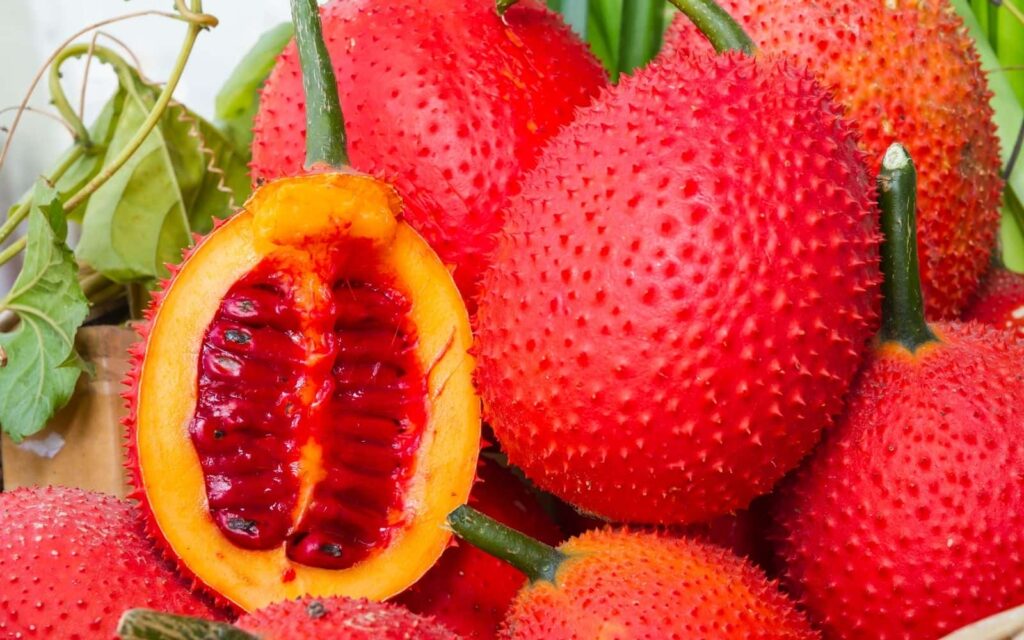
| Size | 5 inches long |
| Type | Perennial vine |
| Temp | 60°F (15°C) |
| USDA Zone | 9–11 |
Gac melons are a type of perennial Chinese melon grown in Southeast Asia and mainly used for desserts. It’s similar to other types of melons but has a more egg-like shape and firmer skin. Growing Gac Melons isn’t difficult if you have the right conditions and the good seeds.
The best place to grow Gac melons, which have a higher sugar content than other types of melons, is in Southern California. There they will grow year-round with good irrigation and soil drainage.
Gac Melon plants need warm weather for at least nine hours per day. They also need lots of water, especially when they’re growing. Ensure that you harvest them when they’re about five inches long so that melon has fully developed seeds.
12. Galia Melon—Cucumis melo var. reticulatus
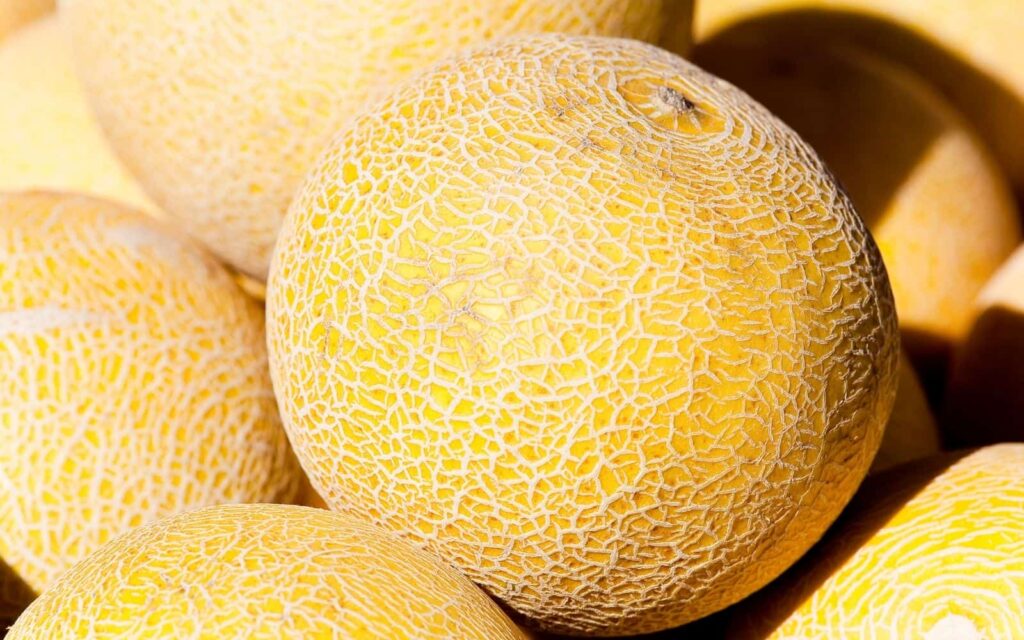
| Size | Weight 5–6 lb |
| Nutrition | Vitamin A and C, carotenoids |
| Hybrid | Cross of Ha-Ogen and Krimka |
| Flavor | Aromatic spicy-sweet flavor |
In the Mediterranean region, Galia melon is a popular fruit. It can be used as an ingredient for desserts or in salads. The Galia melon is grown in both Israel and Morocco. The season for this fruit lasts from May to October and is more expensive than other Israeli produce.
It’s such a famous sweet melon fruit that many people are more than happy to visit the Mediterranean region just for the chance to try this superb fruit. The Galia melon is ready to eat once the rind becomes yellow from its previous green color, and it has a pale lime green juicy flesh.
These fruits grow best on vines that can sprawl along the ground or anywhere there are several months in a row of constant sun.
13. Golden Langkawi Melon
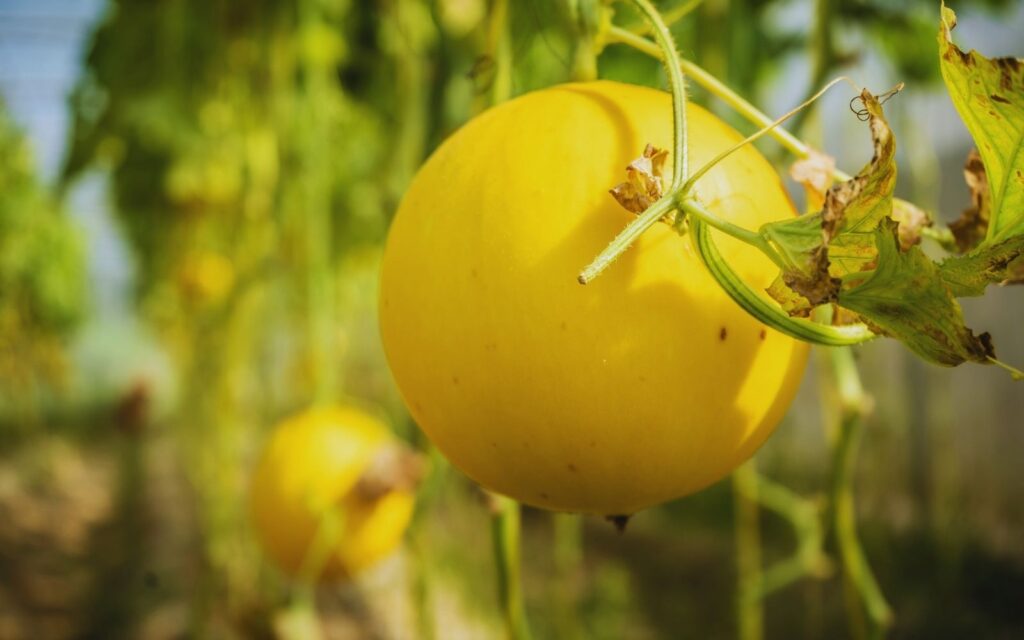
| Size | 4–8 pounds |
| Native | Langkawi, Malaysia |
| Nutrition | Vitamin A and C, niacin |
| Storage | Room Temperature |
The Golden Langkawi Melon is a hybrid of the Goldfinger and Langkawi melons and tastes like sweet honeydew melons with pale yellow skin. It’s also known as an excellent watermelon for its high sugar content, excellent flavor, and lack of seeds.
It takes about 90 days to mature in the ground but is usually eaten within a week of being harvested. They taste best when served chilled and consumed within 2–3 days of harvesting.
It tastes like a honeydew melon with a hint of exotic flavor. It’s also known for its high sugar content that makes it an excellent watermelon in warm climates.
14. Hami Melon—Cucumis melo’ Hami melon’
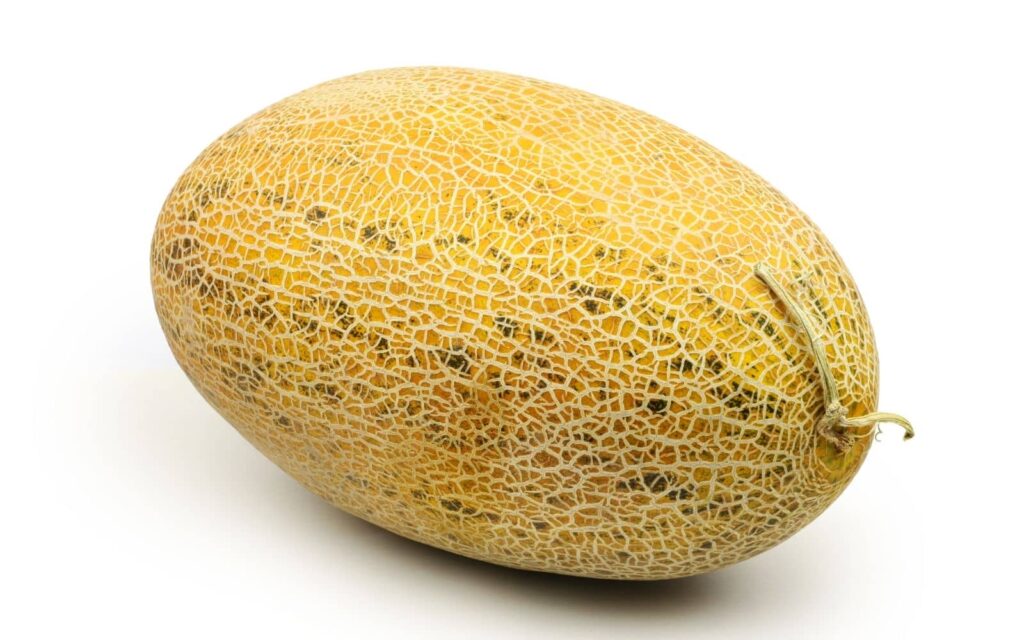
| Size | Medium size |
| Native | China |
| Nutrition | Vitamin A and C, potassium |
| Storage | Room Temperature |
The Hami melon is a hybrid between the musk melon and the honeydew. This is a rare fruit that grows in China and is only available for a few days in October.
The Hami melon, also known as the “Honey Dew Hami Melon,” was first discovered in China’s Hami region and has become one of the country’s most expensive fruits. It was created by grafting tissue from a honeydew onto a Hami melon to produce a scarce hybrid fruit.
This type of melon has been compared to both the Hami and Honeydew due to its taste. It has a sweet flavor but with pineapple and citrus notes. Growing a Hami melon is relatively easy and similar to many other types of melons. However, they’re grown in warm, humid conditions.
They can grow in containers on an apartment balcony or terrace, but they need lots of sun and warmth. They’re less likely to succeed in colder climates than in warmer ones.
15. Honeydew Melon—Cucumis melo
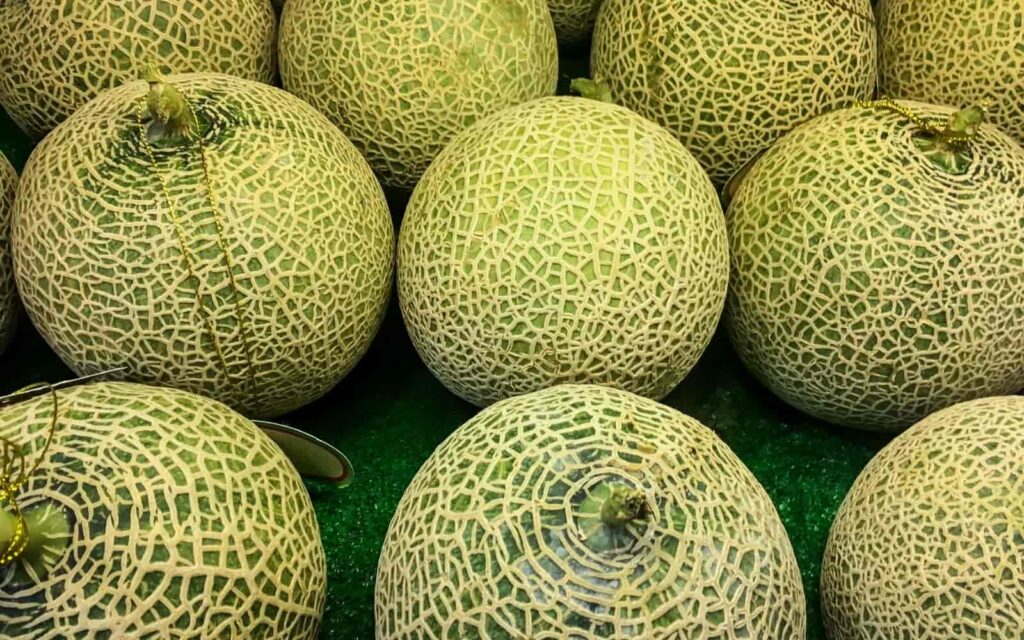
| Size | 5 feet long |
| Soil | Well-drained soil |
| Sunlight | Full Sun |
| Storage | Room Temperature |
Honeydew Melon is a type of melon that is sweet with a light flavor. It’s often used as a dessert to accompany other foods.
The honeydew melon is a relative of both the musk melon and the cantaloupe. Originating in Southeast Asia, honeydew melon is grown as a single crop, mainly for its fruit.
It’s a fantastic melon, having a slightly acidic flavor, and its flesh is reasonably firm. However, it does soften and become softer with age. There are many different varieties, but the most common one has an oval shape and thin green skin.
Honeydew should be planted in full sun and watered frequently. It grows best when the soil is watered regularly and evenly. Growing honeydew melon is more difficult than growing many other types of melons because not only does it have a more extended growth period, but it also requires more care. It’s also one of the sweetest melons with high natural sugar.
16. Horned Melon—Cucumis metuliferus

| Native | South Africa |
| Soil | Well-drained soil |
| Temp | 68°F – 95°F (20°C – 35°C) |
| Storage | Room Temperature |
Horned melon is a unique hybrid melon cross between a watermelon and a cantaloupe. It looks like a watermelon and tastes like a cantaloupe but larger and milder.
The horned melon is hardy and grows well in tropical and temperate climates. This yellow/orange color skin fruit grows spherical with a pointed tip, and its skin is green when young but turns yellow as it ages.
The horned melon requires a long and hot summer to grow. It needs warm weather and preferably direct sunlight to produce fruit. It’s not sensitive to day length so that it can be grown in northern climates, but it must meet the other growing requirements.
Plant the seeds directly in the ground after soaking in water for 24 hours, or plant them in a pot with good soil and keep them well-watered daily. When the seedlings are about 6 inches high (15 cm), move them to larger pots. Keep them well-watered, but don’t overwater, or they will rot.
17. Jade Dew Melon
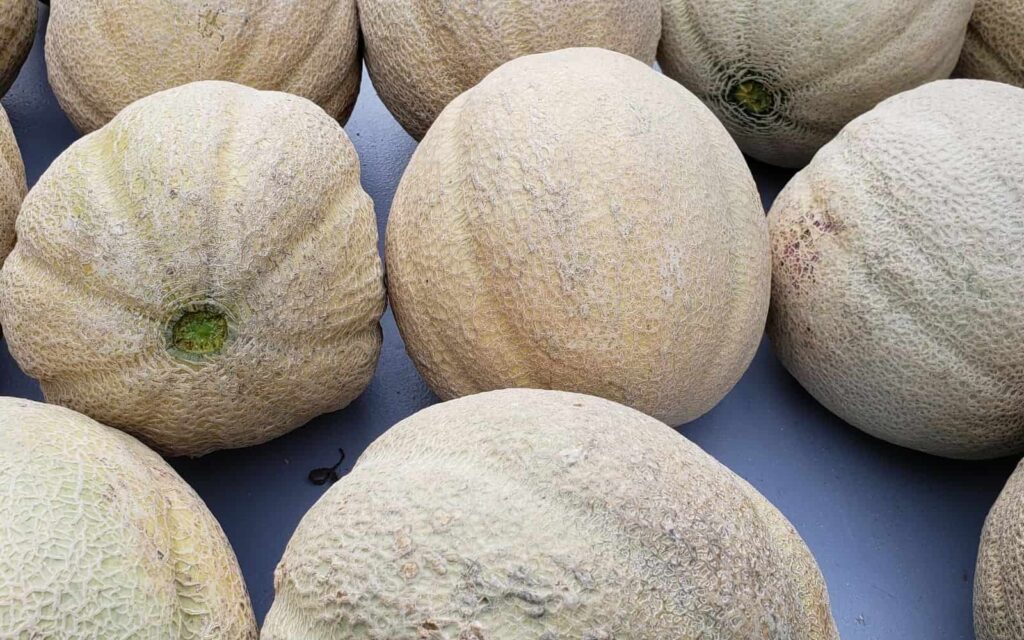
| Weight | 3.5 lb |
| Soil | Well-drained soil |
| Temp | 60°F–75°F (15°C – 24°C) |
| Mature | 80 days |
Jade Dew Melon is a sweet, white, and bulbous fruit that tastes similar to a cross between a cucumber and a melon. Much like the cucumber, the flavor of Jade Dew Melon is unadulterated by any bitterness or strong smell.
As you can imagine, this makes it a great fruit for people who want to boost the flavor of their food yet not risk developing a metallic or sour taste in their mouth.
One way to grow Jade Dew Melons would be to plant them with melon seed in a warm, sunny location with well-drained soil. They need about eight hours of sunlight each day.
They prefer temperatures between 60°F – 75°F (15°C – 23°C) during the day, especially when they’re growing. Unfortunately, these aren’t frost tolerant, so you should plant them after all danger of frost has passed in your area.
18. Kantola Melon

| Size | 1.6 inches long |
| Soil | Moisture potting soil |
| Temp | Warm, dry climate |
| Nutrition | Vitamin C and Folate |
Kantola Melon (also called spiny gourd) is a beautiful, exotic-looking fruit that grows in the wild in North Africa and South America. It’s a relative of the cantaloupe and watermelon. Though it looks similar to those two, it is, in fact, quite different.
They grow best in warm, dry climates, like those found in North America. You can grow them commercially in greenhouses or outdoors. To grow it, you should plant the melon seeds indoors at least six weeks before transplanting them outside.
Once transplanted, they should be watered regularly but not excessively to keep the soil moist but not wet. When growing outside, it’s essential to remove competing plants nearby to get all of the nutrients they need to grow properly.
19. Maroon Cucumber—Cucumis anguria
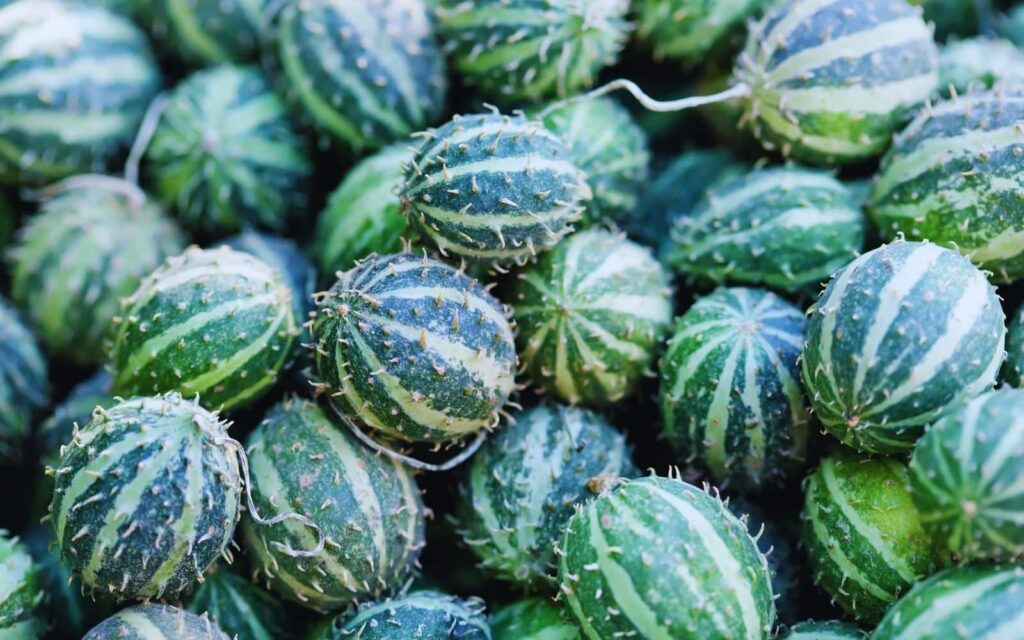
| Size | 1–2 feet long Vine |
| Soil | Moisture potting soil |
| Mature | 80 days |
| Nutrition | Vitamin C and Folate |
The maroon cucumber is a member of the gourd family. (They’re not cucumbers but rather are called Cucurbitaceae.) This is an unusual plant for people to grow indoors because it likes to grow in very hot climates. Maroon gourds are also known as Calabaza gourds.
One of the benefits of maroon cucumbers is the high level of antioxidants it contains. There are different ways to grow maroon cucumber, but most people prefer to do it from seedlings. This way, you get the desired variety of the plant since you can buy them online or at local nurseries.
20. New Century Melon
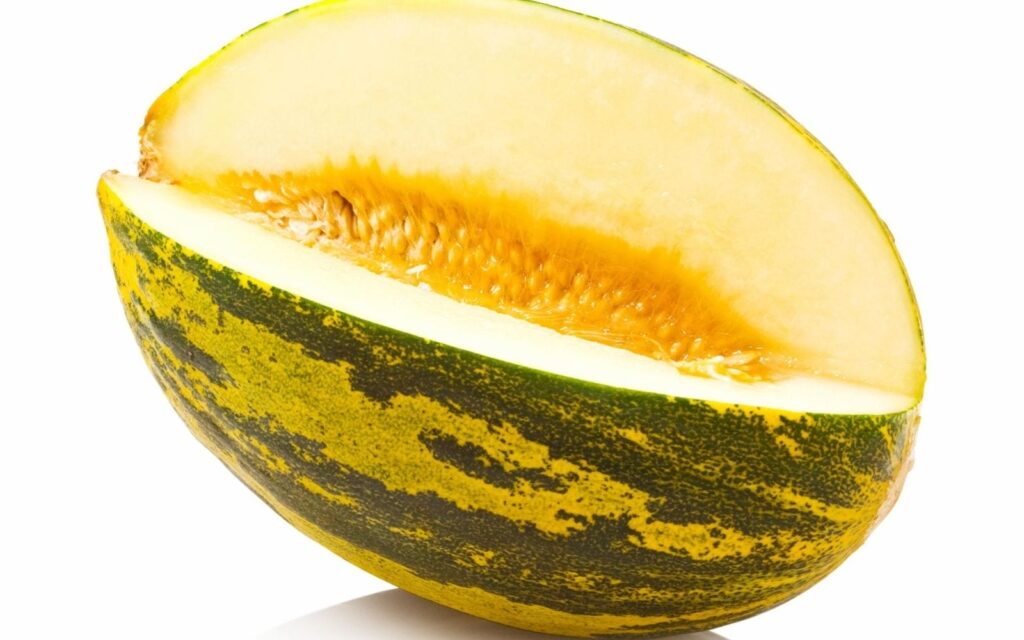
| Weight | 5 lb |
| Soil | Moisture potting soil |
| Sunlight | Full sun |
| Harvest | Summer |
New Century Melon is horticulture and culinary plant from the same family as the cantaloupe. It’s a large, green, ball-shaped fruit that is technically a melon. It can grow up to five pounds (2.3 kg) and is grown, harvested, and eaten throughout the world.
The New Century Melon is a type of melon with an elliptical shape. It has thin webbing white stripe lines on its skin with a yellow color while the flesh is orange.
The texture of this type of melon is thick and sweet, while the taste resembles that of other sweeter melons. This fruit originated from Taiwan and was distributed to other countries in the world.
21. Santa Claus Melon—Cucumis melo “Santa Claus”
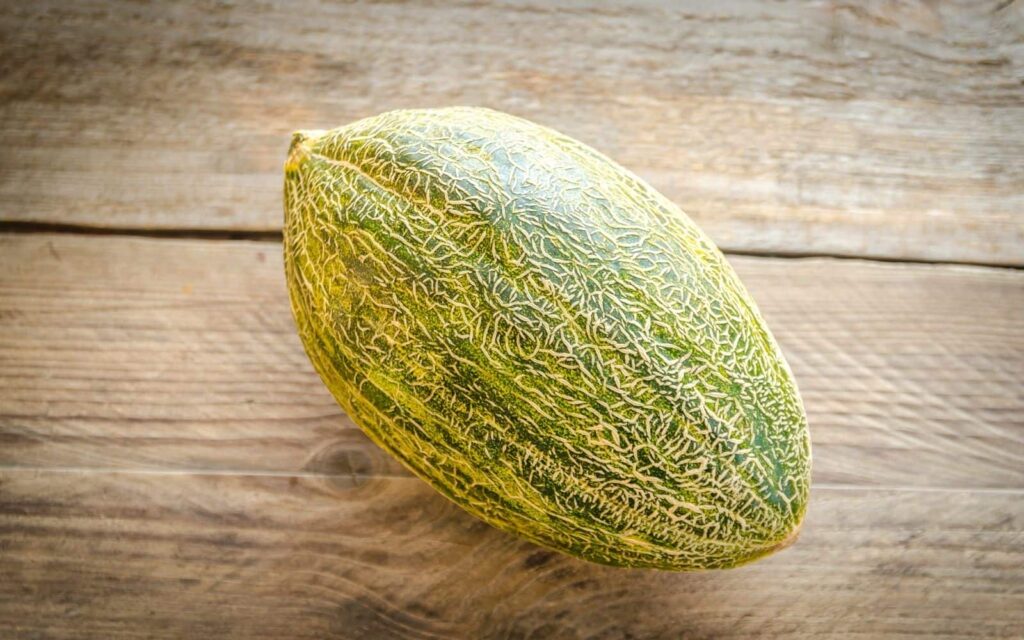
| Size | 12 inches tall |
| Soil | Moisture potting soil |
| Sunlight | Full sun |
| Mature | 110 days |
Santa Claus melon is a large melon with green and yellow skin that has a variety of flavors. It’s usually eaten as a dessert, eaten alone or in salads. Some people like to use it as a garnish for a meal.
It’s also known as Christmas melon since it produces edible melons throughout the summer and into the fall, and it thrives in most climates. The Santa Claus melon plant is a hybrid variety with its origins in Spain.
The fruit of this plant can be eaten as a dessert or used in cooking. The plant needs full sun and lots of water. If you live in an area with mild winters, you can try planting it outside and leaving the vine on the ground. Or you can try an organic method where it will be grown in containers for indoor use only.
22. Snap Melon—Cucumis melo momordica
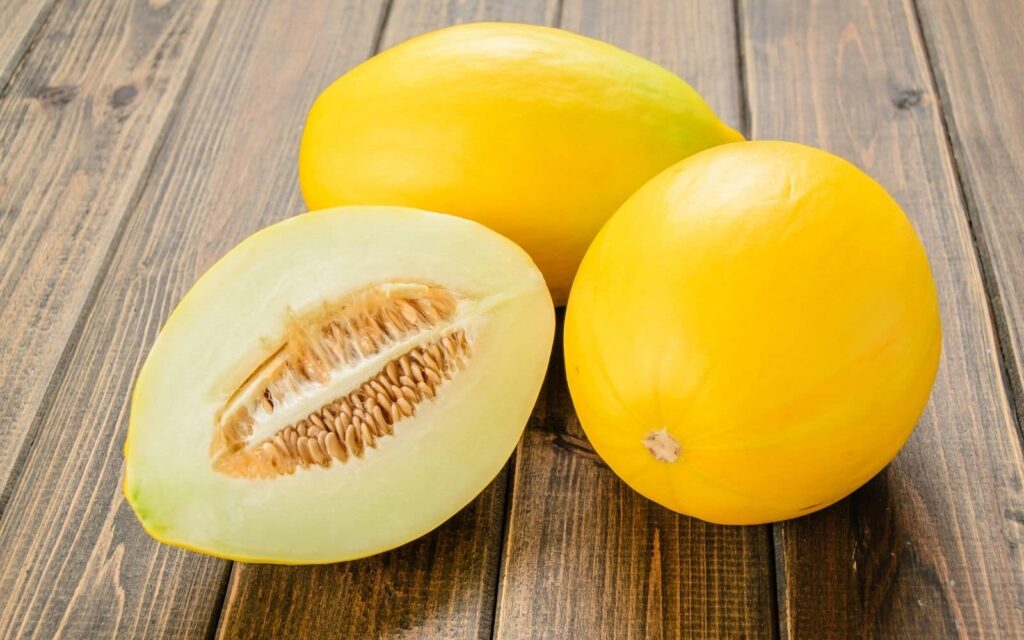
| Size | Medium |
| Soil | Light Moisture soil |
| Sunlight | Full sun |
| Propagation | Seed |
Snap melon is a relatively new type of melon. These melons are reasonably large (some are as big as a cantaloupe) and have large seeds. A few types of melon seeds are sold in grocery stores, but farmers and garden centers sell the most variety. These melons grow quickly, taste good, and are relatively easy to grow.
To get the most out of your snap melon, make sure that you water it regularly, so the whole plant stays moist and well hydrated. In addition, it needs lots of sunlight and warmth.
But if you live where it’s freezing during the winter months, you should give it a little protection from the cold by wrapping it in a plastic bag or tucking it under some mulch.
This is a popular type of melon native to Asia. It grows on an annual vine and is frost-sensitive. They either do well outdoors in a frost-free region or grow in containers and are kept inside during winter to avoid cold weather.
23. Sprite Melon
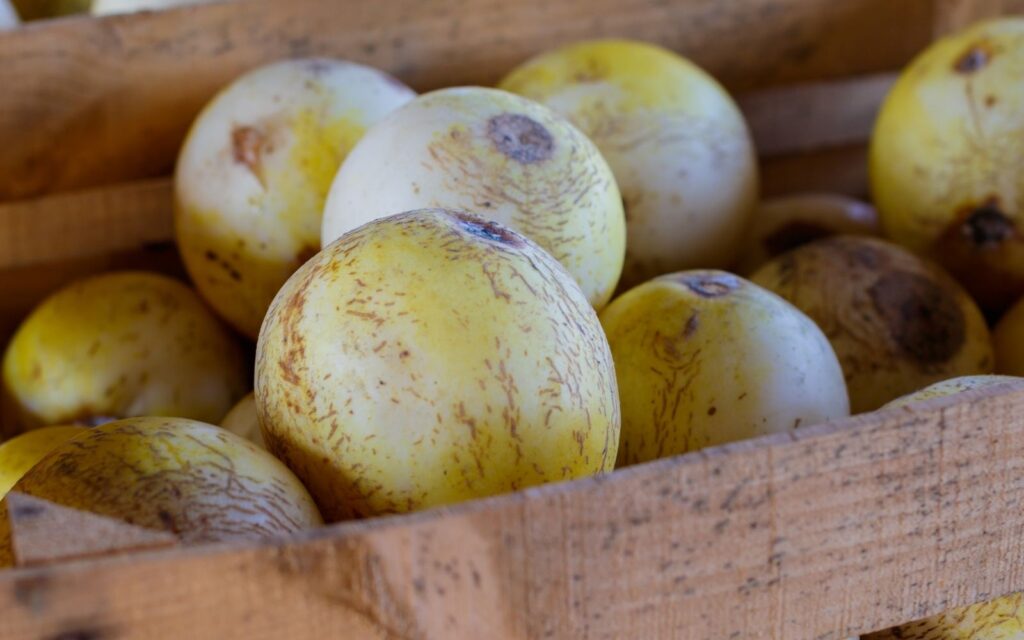
| Size | Small – Medium |
| Soil | Light Moisture soil |
| Sunlight | Full sun |
| Propagation | Seed |
The Sprite Melon is a berry from the melon family that is highly prolific and grows in abundance. It was initially discovered in South Africa in the early 1900s but has only been recently brought into the US for domestic use. The fruit has pink or reddish-pink flesh, although the skin is usually a darker shade of pink or purple.
The Sprite melon is an elongated shape seeded fruit that is up to 35% sweeter than other types of melons. It has ivory color skin, and as the melon ripens, brown markings start forming on it. After it has matured, it has a crispy sweet flesh with a light green outer shell.
24. Sugar Melon
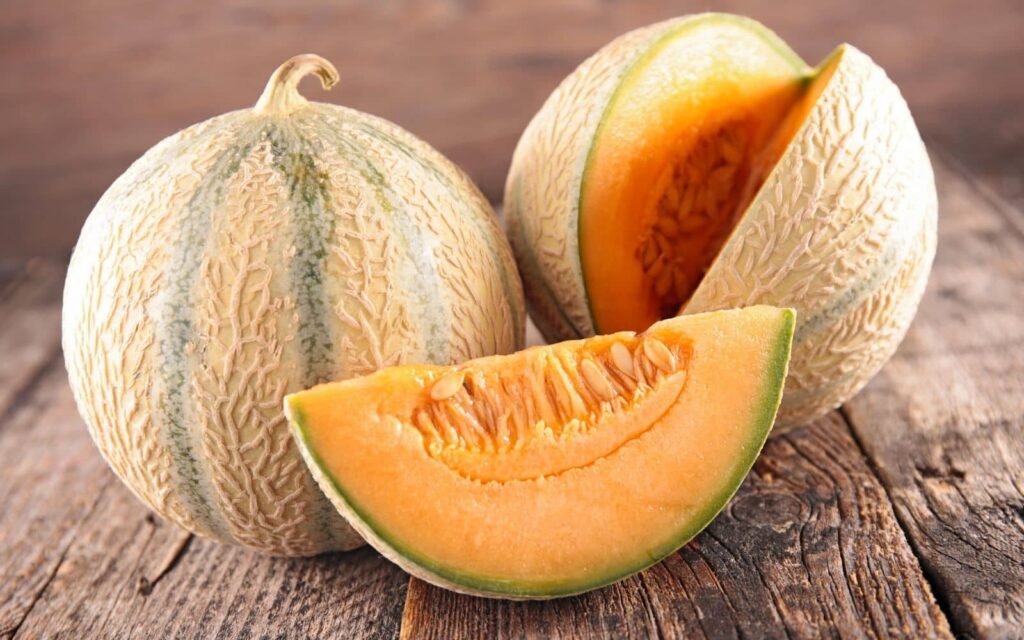
| Size | Medium |
| Soil | Well-drained soil |
| Sunlight | Full sun |
| Mature | 75–80 days |
Sugar melon is a large tropical edible plant that is a member of the cucumber family. The botanical name for this plant is Cucumis melo. The fruit is also called honeydew melon and is a favorite of salad, relish, and any other food.
These are a type of melon that has a round shape and medium size. They’re orange (sometimes also yellow) on the inside and have a silvery-grey outside. The name comes from their sweet taste.
25. Valencia Melon
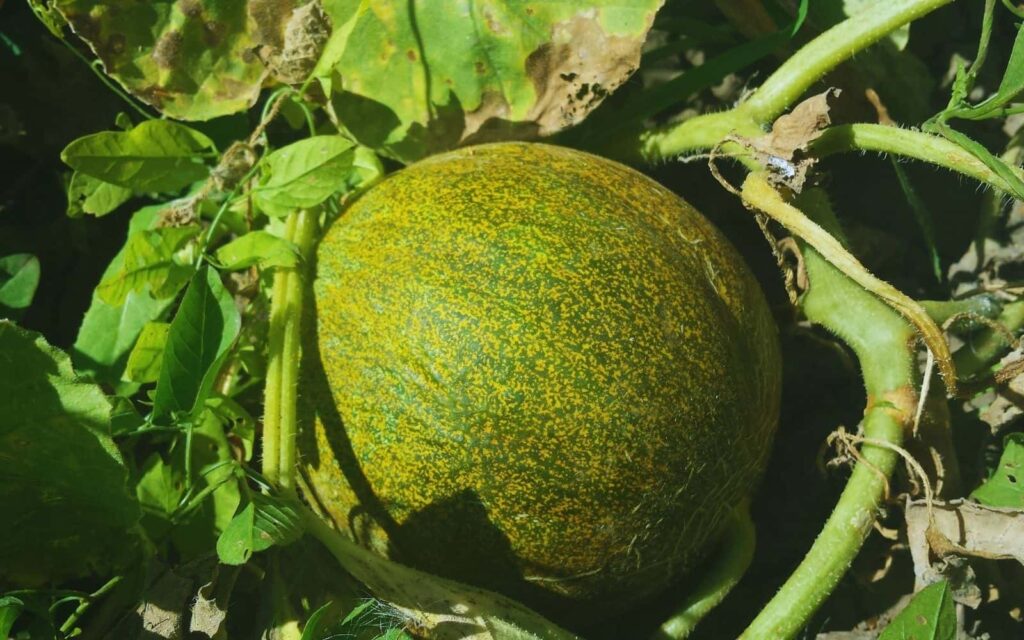
| Size | Small – Medium |
| Soil | Well-drained soil |
| Sunlight | Full sun |
| Mature | 100–110 days |
The Valencia melon is a delicious fruit that is grown on vines. It’s a small melon fruit that is very sweet. It’s said that the melon originated in the area of Valencia, Spain. The soft orange flesh fruit is perfect for fruit salads, desserts, and other great-tasting recipes.
These watermelon-like fruits can be eaten raw as a fruit salad, but they have a tougher rind and a sweeter taste when cooked. Valencia Melons are sun-ripened in greenhouses for at least one week before they’re harvested and shipped to the retail market.
The best way to grow Valencia Melons is by using special fertilizers and plenty of sunlight to get them ready for harvest.
26. Watermelon—Citrullus lanatus
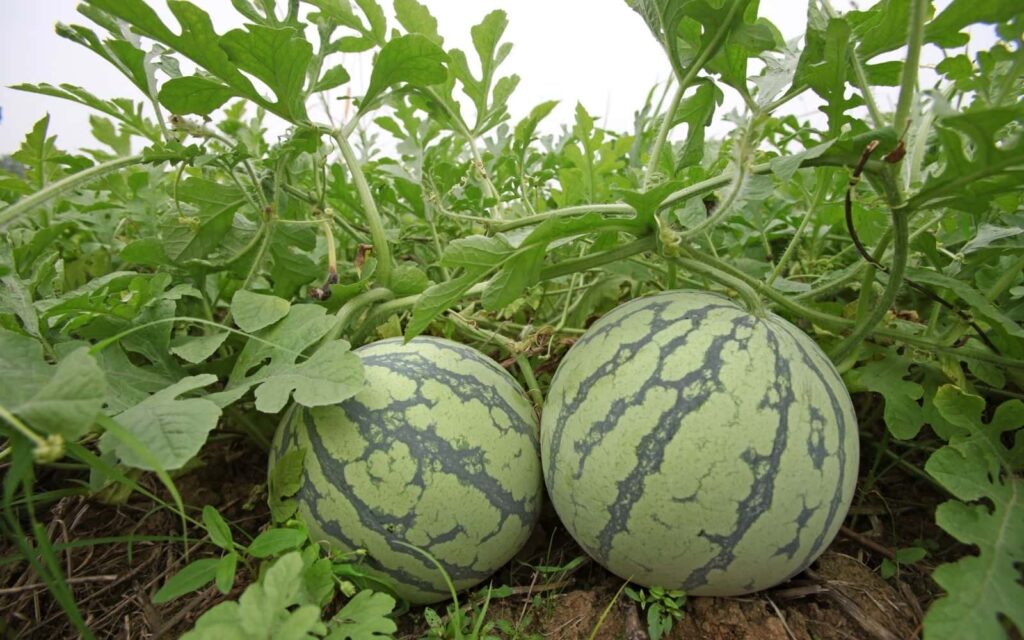
| Size | Large |
| Soil | Well-drained sandy soil |
| Sunlight | Full sun |
| Mature | 90 days |
Watermelons are botanically known as varieties of Cucumis melo and are related to cucumbers. Watermelon is known for having sweet, juicy flesh and minimal seeds.
This fruit is effortless to grow because it’s not fussy about soil, climate, or light. There are two types of watermelon, one with netted skin and the other with smooth skin.
The netted or fuzzy-skinned variety has a thicker rind which produces less juice than the smooth-skinned variety. But the netting makes for the easier carving of decorative designs.
The next step in growing watermelon would be planting the seeds that you should do in April or May after frost has passed. Planting can be done about 8–12 inches apart, 2–3 seeds per hole for each plant. It will take 90 days for it to become ready to harvest.
27. Winter Melon—Benincasa hispida

| Size | 80 cm |
| Soil | Well-drained sandy soil |
| Sunlight | Full sun |
| USDA Zone | 9–11 |
Winter melon is one of the easiest melon varieties to grow at home. It also happens to be one of the tastiest. Winter melons can be planted in the spring and harvested in early summer.
The seedless watermelon resemblance of winter melon has a dark green color and is often confused with watermelons. The winter melon has yellow flowers and can grow very big weigh in at a whopping 20 pounds.
The tender leaves of this plant are also edible and can be steamed and eaten as a vegetable or added to soups. It originates from Asia, where it’s widely cultivated.
How to pick a ripe melon
The best way to judge a ripe melon is by looking at the “ground spot” on the bottom—where the stem was once attached. A ripe melon will have a ground spot that is brown and sunken. When it comes to choosing a melon, pick the heavier one. Once you’ve selected one, evaluate for any dents, cracks, or bruises.
You should check the netted rind color to determine which is ripe. Melon becomes ripe from the inside out, so avoid picking the one with a shiny appearance. These melons and cantaloupes will have inferior flavor.
For watermelon and honeydew, look for a dull-looking exterior. For muskmelons and cantaloupes, the best kind are the ones with an orange or golden rind.
After picking a melon, tap it with your palm if it sounds hollow and choose that one. Next, you can try a few other popular melon varieties, such as Crane melon, Juan canary melon, Honey globe melon, Apollo melon, and Skyrocket melon. These have a vibrant flavor and a high source of nutrients.
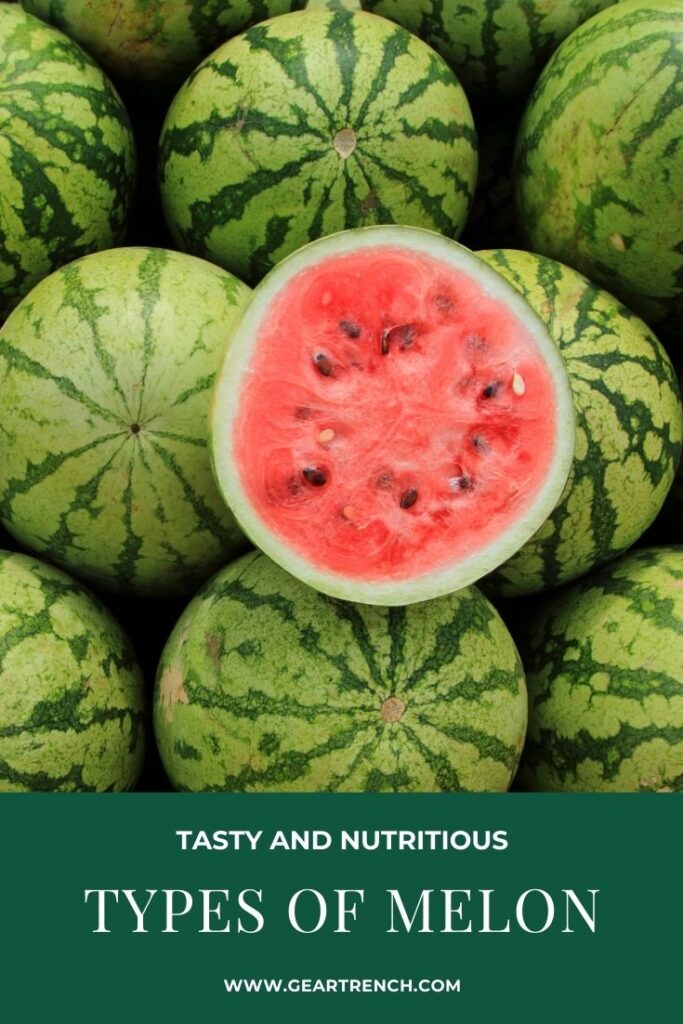
Don’t forget to share this post




